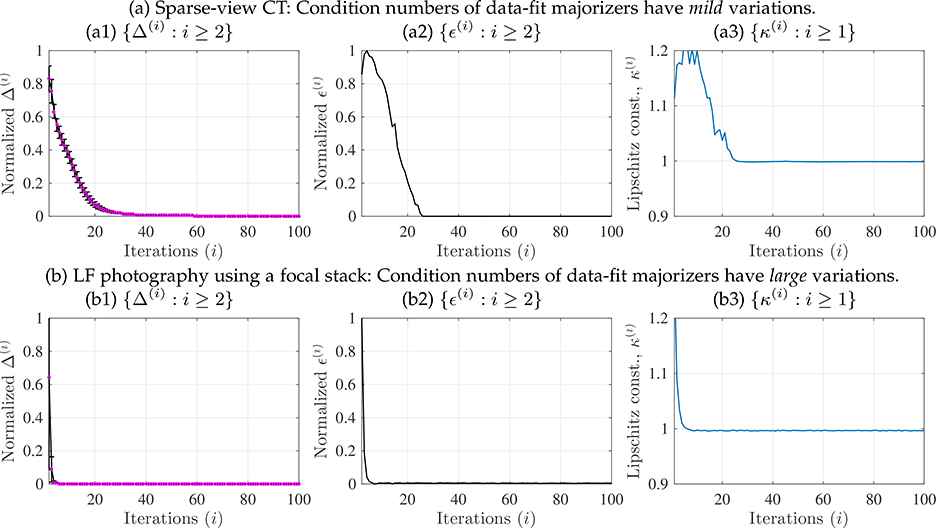Fig. 3.
Empirical measures related to Assumption 4 for guaranteeing convergence of Momentum-Net using dCNNs refiners (for details, see (19) and §4.2.1), in different applications. See estimation procedures in §A.2. (a) The sparse-view CT reconstruction experiment used fan-beam geometry with 12.5% projections views. (b) The LF photography experiment used five detectors and reconstructed LFs consisting of 9×9 sub-aperture images. (a1, b1) For both the applications, we observed that Δ(i) → 0. This implies that the z(i+1)-updates in (Alg.1.1) satisfy the asymptotic block-coordinate minimizer condition in Assumption 4. (Magenta dots denote the mean values and black vertical error bars denote standard deviations.) (a2) Momentum-Net trained from training data-fits, where their majorization matrices have mild condition number variations, shows that ϵ(i) → 0. This implies that paired NNs in (Alg.1.1) are asymptotically nonexpansive. (b2) Momentum-Net trained from training training data-fits, where their majorization matrices have mild condition number variations, shows that ϵ(i) becomes close to zero, but does not converge to zero in one hundred iterations. (a3, b3) The NNs, in (Alg.1.1), become nonexpansive, i.e., its Lipschitz constant κ(i) becomes less than 1, as i increases.

